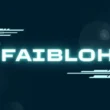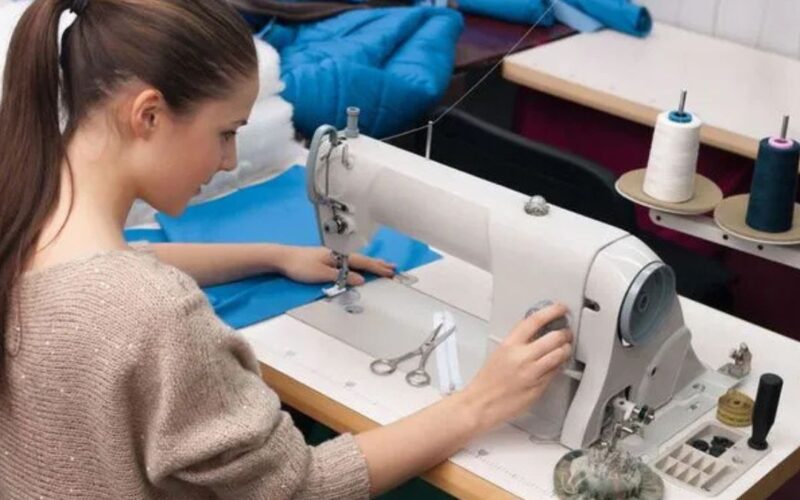Sewing is an art that combines creativity with craftsmanship. At the heart of this craft lies a fundamental element: seams. The right seam type can elevate your project from ordinary to extraordinary. Whether you are piecing together a quilt or crafting a stylish dress, understanding different Nahttypen—seam types—is essential for achieving professional results.
In this guide, we will explore various seam types that every sewer should know. From the basic to the decorative and even specialty seams, each serves its unique purpose in enhancing both functionality and aesthetics. So grab your fabric and threads; let’s dive into the colorful world of sewing seams!
Basic Seam Types:
Basic seam types form the foundation of sewing. Understanding these seams is essential for any project.
The straight seam is the most common type. It’s simple and effective, allowing fabric pieces to be joined easily. This seam offers strength and versatility, making it ideal for various garments.
Next is the French seam, which provides a clean finish on delicate fabrics. It encloses raw edges within the seam itself, preventing fraying while adding an elegant touch to your creations.
Overlock seams are another staple in sewing. They use a special machine to trim and finish edges simultaneously. This technique produces a durable edge that prevents unraveling, perfect for knit fabrics or items needing extra stretch.
Each basic seam type has its unique application and benefits. Mastering these will enhance your sewing skills significantly.
– Straight Seam
The straight seam is the foundation of sewing. It’s a fundamental stitch that connects two pieces of fabric together in a clean and straightforward manner.
Typically sewn with a sewing machine, this seam runs parallel to the edges of your material. Its versatility makes it perfect for almost any project, from garments to home décor.
To create a straight seam, align your fabric edges carefully. Use pins or clips to keep everything in place before you start stitching.
This type of seam can be finished differently depending on your needs—serged for durability or zigzagged to prevent fraying.
Practicing this basic technique will boost your confidence as you delve into more complex seams later on. A well-executed straight seam sets the stage for professional-looking results in all types of sewing endeavors.
– French Seam
The French seam is a favorite among many sewists for its elegant finish. This seam encloses raw edges, providing durability and a polished appearance.
To create a French seam, start by placing the fabric wrong sides together. Stitch a narrow seam, usually around 1/4 inch wide. After trimming the excess fabric, fold it right sides together and press.
This step hides all raw edges inside the sealed seam. Then stitch again, this time using a wider allowance of about 3/8 inch.
French seams are ideal for delicate fabrics like chiffon or silk because they prevent fraying while adding sophistication to garments such as blouses or lingerie. They may take extra time but yield professional results that elevate any project significantly.
– Overlock Seam
The overlock seam is a versatile choice in the world of sewing. It’s especially popular for knit fabrics and unlined garments. This seam prevents fraying, ensuring that your projects maintain their integrity over time.
To create an overlock seam, you typically use an overlocker or serger machine. These machines cut the fabric edges while simultaneously stitching them together. The result is a neat finish that looks professional.
One significant advantage of this type of seam is its stretchability. It allows fabrics to move freely without compromising the garment’s structure. This flexibility makes it ideal for activewear and casual clothing.
Additionally, mastering the overlock technique can elevate your sewing skills significantly. Once you get comfortable with it, you’ll find numerous creative applications in various projects!
Decorative Seam Types:
Decorative seam types add flair and personality to your sewing projects. They transform ordinary garments into eye-catching creations.
The flat-felled seam is a classic choice, often seen in denim. This seam hides raw edges, providing durability while creating a clean finish. It’s perfect for jeans or shirts that need extra strength.
Piped seams introduce bold contrast by incorporating fabric tubes between layers. This technique elevates simple designs, giving them a polished edge that stands out beautifully.
Bound seams offer another stylish approach by encasing raw edges with bias tape or other materials. They not only enhance the aesthetic but also protect the fabric from fraying.
Experimenting with these decorative options can elevate your work from basic to stunning. Each type of decorative seam has its unique charm, allowing you to express creativity through your stitching choices.
– Flat-Felled Seam
The flat-felled seam is a favorite among sewists for its durability and clean finish. It consists of two fabric pieces sewn together, then folded under and stitched down to create a neat appearance.
This seam type is often found in jeans and shirts, where strength matters. Its design prevents fraying, making it ideal for high-wear garments.
Creating a flat-felled seam involves careful alignment and precise stitching. Start by sewing the raw edges together with a straight stitch. Then trim one side closer to the stitches before folding the other over it.
When you press the fold, you’ll notice how professional it looks—smooth on both sides! This technique not only enhances your project’s aesthetics but also adds longevity to your creations. Whether you’re working on casual wear or tailored pieces, mastering this seam can elevate your sewing game significantly.
– Piped Seam
The piped seam adds a touch of elegance to your sewing projects. This technique involves encasing a cord or strip of fabric within the seam, creating a distinctive raised edge.
You can use contrasting colors for the piping to make it stand out, enhancing visual interest in clothing and home decor items alike. It’s perfect for accentuating curves and edges.
Sewing a piped seam requires precision. First, attach the piping to one piece of fabric before joining it with another layer. This method ensures that the piping lies flat and evenly throughout.
Piped seams work wonderfully on pillows, bags, and even garments like jackets. They elevate simple pieces by adding sophistication without overwhelming the design.
Experimenting with different widths of piping can yield various aesthetics as well—narrow for subtlety or wide for bold statements!
– Bound Seam
The bound seam is a stylish choice for finishing raw edges in sewing. It involves encasing the fabric edges with bias tape or another contrasting fabric, giving your garment an elegant touch.
This seam type not only adds visual interest but also provides durability. The binding protects the edges from fraying, making it ideal for lightweight fabrics that might unravel easily.
You’ll commonly find bound seams in unlined jackets and garments where a clean finish is essential. They can be used decoratively as well, enhancing the overall design of your project.
Creating a bound seam requires precision. You need to ensure that the binding is applied evenly and securely along the edge. With practice, this technique can elevate your sewing game significantly.
Specialty Seam Types:
Specialty seam types bring creativity and functionality together in sewing Nahttypen. They serve specific purposes while adding flair to your projects.
The box pleat seam is perfect for creating structured layers. This technique adds depth, making garments like skirts and dresses visually appealing. It offers a tailored look that stands out.
Next up is the welt seam, which provides a polished finish for pockets or openings. The added dimension enhances durability, ensuring your designs not only look great but also last longer.
Then there’s the lapped zipper seam, ideal for concealing zippers in various applications. This method allows you to achieve a seamless appearance while maintaining easy access to closures.
Experimenting with these specialty seams can elevate your sewing game. Each type has its unique charm and function that can transform an ordinary piece into something extraordinary.
– Box Pleat Seam
The box pleat seam is a stylish choice that adds depth and Nahttypen structure to garments. This technique involves folding the fabric in a way that creates raised sections, perfect for skirts or tailored shorts.
Box pleats offer versatility. They can be used to achieve both formal looks and casual vibes, depending on your fabric choice. The precision of these seams gives an elegant finish, making them ideal for special occasions.
Creating a box pleat seam requires careful measuring. It’s important to ensure consistent spacing between each fold for balance and symmetry. Pinning before sewing helps maintain the placement as you work.
This type of seam not only enhances aesthetics but also Nahttypen allows for ease of movement. Wearers benefit from added volume without bulkiness—an ideal blend of style and comfort in one seamless package!
– Welt Seam
The Welt Seam is a sophisticated choice for sewers looking to elevate their garment finishes. It creates a clean, tailored look that adds an element of professionalism.
This seam involves encasing raw edges within a strip of fabric, resulting in a neat appearance on both the inside and outside. It’s commonly used in pockets and decorative elements, making it versatile.
Constructing a welt seam requires precision. Begin by cutting your fabric accurately and ensuring that the welt strip aligns perfectly with your main piece. This attention to detail can significantly impact the overall aesthetic.
Welt seams not only enhance visual appeal but also offer durability. They provide added strength where stress points may arise, such as pocket openings or zippers Nahttypen.
Choosing this seam type showcases craftsmanship while contributing functional benefits to your project. Whether you’re working on apparel or home décor items, it’s sure to impress.
– Lapped Zipper Seam
The lapped zipper seam is a fantastic choice when you want both function and style. It offers a clean finish while securely housing your zipper, making it ideal for jackets and bags.
This technique involves overlapping the fabric edges over the zipper. It creates a sleek appearance that hides raw edges, giving your project a polished look. The lapped design also adds an extra layer of durability, which is perfect for heavy-use items.
To achieve this seam, you’ll need to carefully align the fabric pieces before sewing them down. Precision is key here; any misalignment can lead to unevenness in the final product.
Using contrasting thread can elevate this seam even further, creating an eye-catching detail on simple garments. Whether you’re aiming for functionality or aesthetic appeal Nahttypen, mastering the lapped zipper seam will enhance your sewing repertoire significantly.
Choosing the Right Type of Seams for Your Project
Selecting the right seam type can make or break your sewing project. Consider the fabric you’re working with first. Lightweight fabrics often benefit from delicate seams, while heavier materials need something sturdier.
Think about the garment’s purpose too. A casual top might be fine with a basic straight seam, but activewear demands more durable options like an overlock seam to withstand movement and stress.
Also, pay attention to aesthetics. If you’re aiming for a polished look, decorative seams like flat-felled or piped seams add flair without sacrificing strength.
Don’t overlook ease of construction either. Some seams require specific Nahttypen techniques that could complicate your workflow if you’re pressed for time or still learning the craft.
Taking these factors into account will help ensure that your final piece not only looks great but also functions effectively in its intended use.
Tips and Tricks for Perfect Seams
To achieve perfect seams, start with quality fabric. Choosing the right material can make all the difference in your sewing experience.
Always press your seams as you go. This simple step helps create a crisp finish and keeps everything neat. A good iron is an essential tool in any sewist’s kit.
Use pins or clips to hold layers together before stitching. This prevents shifting and ensures accuracy as you sew.
Adjust your stitch length based on the fabric type Nahttypen. A shorter stitch works well for lightweight fabrics, while a longer stitch suits heavier materials better.
Don’t forget to practice on scraps first! Testing different seam types allows you to refine your technique without risking your main project.
Keep thread tension consistent. Properly threaded machines reduce puckering and enhance the overall look of your seams.
Conclusion
Seam types, or Nahttypen, play a crucial role in the sewing world. Whether you’re a beginner or an experienced sewist, understanding these different seams can elevate your projects significantly. From basic straight seams to intricate specialty ones Nahttypen, each type has its unique purpose and aesthetic.
As you delve into your next sewing project, consider what seam type will work best for your fabric and design. Experiment with various methods to see which ones resonate most with you. With practice comes perfection, so don’t shy away from trial and error.
Embrace the art of seam types as part of your creative Nahttypen journey in sewing. The right seam not only enhances the durability of your garment but also contributes to its overall visual appeal. Happy sewing!




